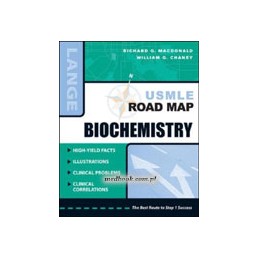- Reduced price

Order to parcel locker

easy pay


 Delivery policy
Delivery policy
Choose Paczkomat Inpost, Orlen Paczka, DHL, DPD or Poczta Polska. Click for more details
 Security policy
Security policy
Pay with a quick bank transfer, payment card or cash on delivery. Click for more details
 Return policy
Return policy
If you are a consumer, you can return the goods within 14 days. Click for more details
Publishers Note:: Products purchased from Third Party sellers are not guaranteed by the publisher for quality, authenticity, or access to any online entitlements included with the product.
A premier tool for course review and USMLE preparation that distills the essential facts within biochemistry and helps students master the required content
Youll never find an easier, more efficient, and more focused way to ace biochemistry and biochemistry-related questions on the USMLE and course examinations than the USMLE Road Map. Designed to provide maximum learning in minimum time, this fully updated USMLE Road Map offers a concise, creative, and well-illustrated approach to mastering biochemistry.
Data sheet
